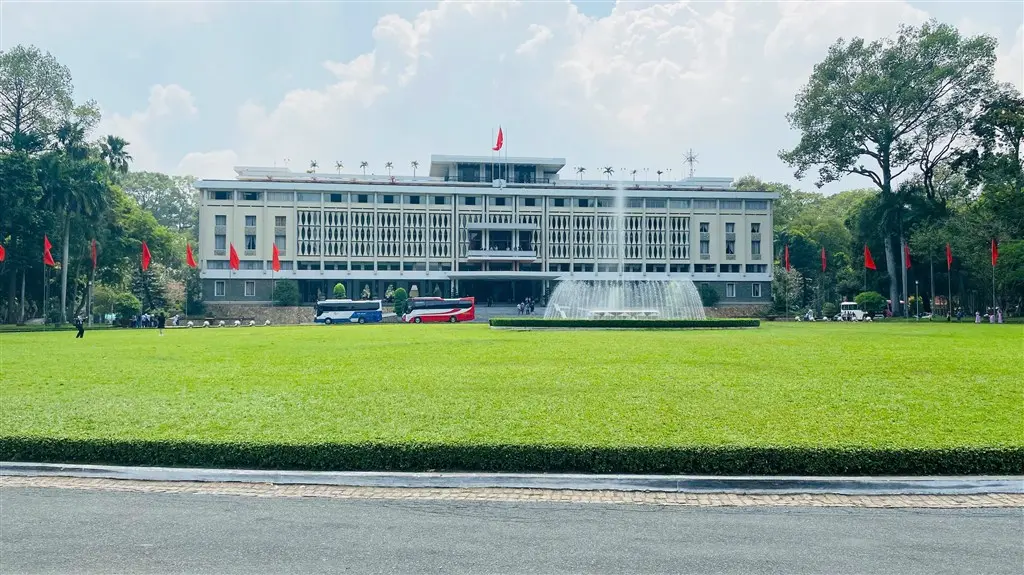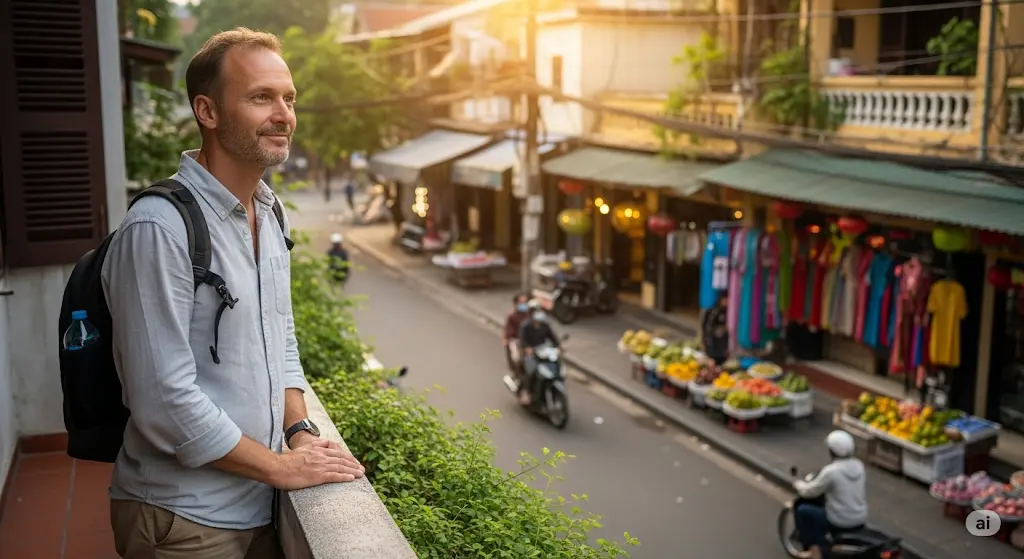Vietnam captivates visitors. Its landscapes are stunning. Its history is rich. The heart of its allure often lies in its vibrant and deeply ingrained Vietnamese traditions. These practices, passed down through generations, shape the daily lives, values, and social fabric of the Vietnamese people. Understanding these customs offers more than just a glimpse into a different way of life; it provides a pathway to genuine connection and appreciation.
EssentialVietNamtravel.com is your guide to exploring this fascinating cultural heritage. This article will explore the core elements of Vietnamese culture and customs, helping you navigate and appreciate this beautiful Southeast Asian nation. The culture and customs of vietnam are unique and diverse.
Many Vietnamese traditions are ancient. They have withstood the tests of time, conflict, and modernization. From the reverence for ancestors to the joyous celebrations of Tet Holiday, these traditions provide a framework for society. They offer a sense of identity and continuity. For any vietnam traveller, knowledge of these social customs is invaluable.
It enriches the travel experience. It fosters respectful interactions. Learning about vietnam customs can transform a simple visit into a profound cultural immersion. This guide aims to provide clear, practical insights into the most significant Vietnamese cultural traditions. We will cover everything from family values to festival rituals, ensuring you feel prepared and informed.
The Core of Vietnamese Traditions: Family and Ancestor Worship
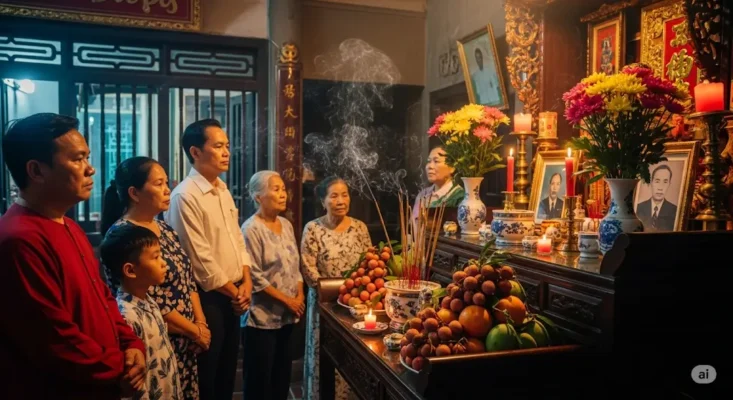
Family forms the bedrock of Vietnamese society. The concept of “nhà” (house, family) extends beyond the nuclear unit. It often includes multiple generations living together or in close proximity. This strong family bond is a central theme in many Vietnamese traditions. It influences behavior, decision-making, and social expectations. Alongside family, ancestor worship is a prominent spiritual practice.
It reflects a deep respect for forebears and a belief in their continued influence on the living. These two pillars, family and ancestral veneration, are fundamental to understanding the Vietnamese psyche and many customs in vietnam. Understanding these practices provides insight into Vietnamese manners and the importance of respect.
Filial Piety: The Cornerstone of Vietnamese Society
Filial piety is a core value in Vietnamese culture. This concept, known as “Hiếu Thảo,” emphasizes deep respect, obedience, and care for one’s parents and elders. It is not merely a suggestion but a deeply ingrained societal expectation. Children learn from a young age to honor their parents. They learn to listen to their guidance. They learn to support them, especially in old age. This responsibility is taken very seriously.
The influence of filial piety permeates daily life. Major life decisions, such as career choices or marriage, often involve consultation with parents. Their approval is highly valued. In family gatherings, elders are served first. Their opinions carry significant weight. This respect extends beyond immediate family to all older individuals in the community.
Showing deference to elders is a key aspect of vietnamese etiquette. This tradition fosters strong intergenerational bonds. It ensures that the wisdom and experience of older generations are valued and passed down. The family unit provides immense support. This emphasis on filial piety contributes to social stability and harmony.
Ancestor Worship: Connecting with the Past
Ancestor worship is a significant spiritual practice in Vietnam. It is deeply intertwined with filial piety, extending respect and remembrance to those who have passed away. Most Vietnamese homes, regardless of religious affiliation, have an ancestral altar. This altar is usually in the most prominent place in the house. It holds photos of deceased family members, incense burners, flower vases, and small offering cups. The meaning of vietnamese ancestor worship is profound; it is a way to maintain connection with the family’s roots and seek guidance and blessings from ancestors.
Regular rituals are performed at the altar. These include lighting incense offering sticks daily or on specific occasions. Fresh flowers and fruits are often placed as offerings. On important dates, such as the death anniversary (ngày giỗ) of an ancestor or during Tet Holiday, more elaborate offerings are made. These typically include favorite foods of the deceased and other symbolic items.
These family gathering events reinforce family bonds. They also honor the lineage. This practice is not about worshipping gods. It is about showing continued respect and gratitude to those who came before. It is a beautiful expression of Vietnamese beliefs about family continuity. This custom of vietnam highlights the deep respect for heritage.
Vibrant Festivals: Celebrating Vietnamese Culture and Heritage
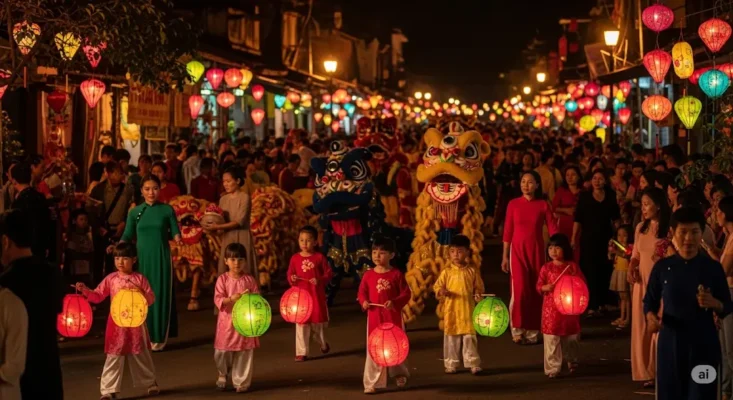
Festivals are an integral part of Vietnamese life. They offer a vibrant display of Vietnamese traditions, beliefs, and community spirit. These celebrations, often tied to the lunar calendar, punctuate the year with color, music, and ritual. They are occasions for families to reunite. They are times to pay respects to deities and ancestors. They are opportunities to enjoy traditional foods and cultural performances. From the nationwide excitement of Tet Nguyen Dan to localized village festivals, these events showcase the rich tapestry of Vietnamese heritage and provide insight into Vietnamese rituals. Many festivals are part of culture that has been passed down for generations.
Tet Nguyen Dan: The Most Important Vietnamese Tradition
Tet Nguyen Dan, commonly known as Tet, is the Lunar New Year. It is the most important and widely celebrated festival in Vietnam. Tet marks the arrival of spring. It is a time for new beginnings, family reunions, and expressing hopes for the coming year. Preparations for Tet begin weeks in advance. Houses are meticulously cleaned. Debts are settled. New clothes are purchased. This period is bustling with activity.
A key element of Tet is the preparation of symbolic food. Banh Chung, a savory square cake made of glutinous rice, pork, and mung beans, is a quintessential Tet dish. Families often gather to make Banh Chung together. Homes are decorated with peach blossoms (in the North) or apricot blossoms (in the South), kumquat trees, and other festive ornaments. During the first few days of Tet, people visit relatives and friends.
They exchange good wishes. Children receive lucky money in red envelopes, a tradition called “Lì Xì.” The first person to enter a house after midnight on New Year’s Eve, known as “xông đất,” is believed to influence the family’s fortune for the year. Learning how to celebrate tet holiday in vietnam involves understanding these unique vietnamese new year traditions and their deep cultural significance. It is a wonderful time to witness Vietnamese customs firsthand.
Mid-Autumn Festival: A Joyful Celebration for Children
The Mid-Autumn Festival, or “Tết Trung Thu,” is another beloved Vietnamese tradition. It is celebrated on the 15th day of the 8th lunar month, when the moon is at its fullest and brightest. While it has ancient agricultural roots related to celebrating the harvest, today it is primarily a festival for children. It is often called the “Children’s Festival.”
During Tết Trung Thu, streets and homes are adorned with colorful lanterns of all shapes and sizes. Children participate in lively lantern parades, carrying their own lit lanterns through the neighborhoods. Lion dances, with their energetic drumming and acrobatic movements, are a common sight. The dragon-lion dance symbolism is associated with luck and prosperity.
A special treat for this festival is the mooncake (“bánh trung thu”). These rich, sweet cakes come in various flavors and intricate designs. Families gather to share mooncakes and watch the full moon. The festival fosters a sense of community joy. It emphasizes the importance of children in society. This is a good in vietnam cultural highlight.
Other Notable Festivals and Their Significance
Beyond Tet and the Mid-Autumn Festival, Vietnam hosts numerous other festivals. The Hung Kings’ Commemoration Day (Giỗ Tổ Hùng Vương) is a national holiday. It honors the legendary founders of the nation, the Hung Kings. This festival takes place on the 10th day of the 3rd lunar month at the Hung Temple in Phu Tho province. It draws pilgrims from all over the country. It highlights the importance of national identity and Vietnamese history.
Many villages also have their own unique festivals. These often celebrate local deities, historical figures, or significant events in the village’s past. The Giong Festival, celebrated in several parts of Hanoi, commemorates the mythical hero Saint Giong. These local festivals are rich in traditional rituals, games, and performances. They showcase the diversity of Vietnamese folklore and the strong sense of community in village life. These events are a testament to how traditions preserve identity at a local level. The lunar calendar influence is strong in scheduling these cultural events.
Symbolic Icons and Art Forms in Vietnamese Traditions
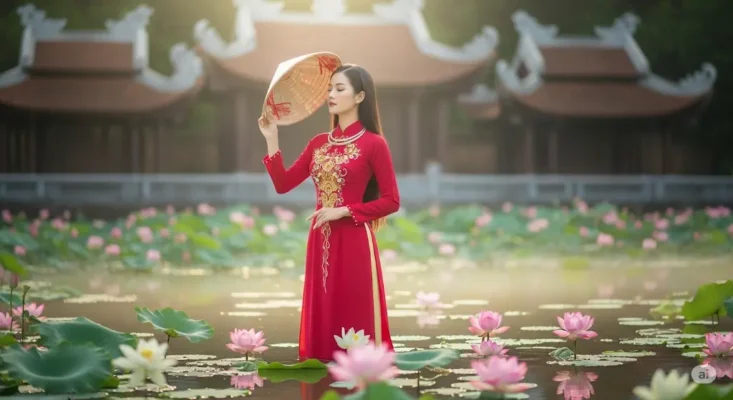
Vietnamese traditions are rich with symbols and artistic expressions. These elements are not merely decorative. They carry deep cultural meanings. They reflect the history, values, and aesthetics of the Vietnamese people. From iconic garments like the Ao Dai to revered natural symbols like the lotus flower, these icons are woven into the fabric of daily life and national identity.
Understanding these symbols provides a deeper appreciation for Vietnamese culture. Traditional arts, such as water puppetry and Dong Ho paintings, offer unique windows into the Vietnamese soul and its artistic aspects. These traditions are passed down, carrying significant cultural weight.
The Ao Dai: An Emblem of Vietnamese Grace
The Ao Dai is the traditional Vietnamese long dress. It is recognized worldwide as a symbol of Vietnamese elegance and femininity. The Ao Dai consists of a tight-fitting silk tunic worn over long, flowing trousers. While designs have evolved, the essence of the Ao Dai remains its graceful silhouette that subtly enhances the wearer’s form. The material is often silk, adding to its luxurious and delicate appearance.
The Ao Dai is worn on special occasions. These include weddings, Tet Holiday, and other formal events. Many schoolgirls in Vietnam wear a white Ao Dai as their uniform. This instills a sense of national pride from a young age. The Ao Dai garment is more than just clothing. It represents Vietnamese identity, grace, and cultural pride. Its timeless beauty makes it an enduring symbol of Vietnamese tradition. It is a visual representation of vietnamese cultural traditions that many vietnamese tourists and international visitors admire.
The Lotus Flower and Conical Hat: Everyday Symbols
The lotus flower holds profound symbolism in Vietnamese culture. It is regarded as a symbol of purity, serenity, and optimism. The lotus grows in muddy water. Yet, it rises above the surface to bloom with remarkable beauty. This journey mirrors the Vietnamese spirit of resilience and the ability to overcome adversity. The lotus flower is Vietnam’s national flower. It appears frequently in Vietnamese art and architecture. Its image evokes a sense of peace and spiritual enlightenment.
The conical hat, or “Nón Lá,” is another ubiquitous symbol of Vietnam. This simple, practical hat is made from palm leaves. Its primary function is sun protection and rain protection for people working in rice paddies and outdoors. Beyond its utility, the Nón Lá has become an iconic cultural item. It represents the hard-working spirit of the Vietnamese people, particularly in rural areas. The image of a woman wearing a Nón Lá and an Ao Dai is a classic portrayal of Vietnamese beauty and tradition. It is a common sight across the country, reflecting its deep integration into daily life.
Dong Son Drums and Ancient Artistic Expressions
The Dong Son drum is a significant artifact of ancient Vietnamese culture. These bronze drums date back to the Dong Son culture (around 600 BC to 200 AD). They are renowned for their intricate geometric patterns, scenes of daily life, animals, and warriors. The Dong Son drum represents a high level of craftsmanship and artistry. It provides valuable insights into the beliefs and society of ancient Vietnamese people. Their significance in ancient culture is immense.
Vietnam also boasts a rich heritage of traditional art forms. Water puppetry (Múa rối nước) is a unique art form that originated in the rice paddies of the Red River Delta. Puppets are manipulated by puppeteers hidden behind a screen, appearing to dance on water. The shows depict scenes from rural life and Vietnamese folklore. Dong Ho paintings are traditional woodblock prints from Dong Ho village.
They are known for their simple, rustic charm and themes of everyday life and good wishes. Ca Tru singing is a sophisticated form of chamber music. These artistic expressions are vital parts of Vietnamese heritage, each telling a story about the nation’s past and its artistic soul. These art forms contribute to the culinary distinctiveness and cultural tapestry.
Vietnamese Customs and Etiquette: Navigating Social Interactions
Understanding Vietnamese customs and etiquette is essential for respectful and smooth interactions in Vietnam. Vietnamese social norms are generally guided by principles of respect, harmony, and modesty. Politeness and consideration for others are highly valued. Knowing how to greet people, behave during meals, and understand basic social cues can greatly enhance your experience as a vietnam traveller. It also shows your appreciation for Vietnamese culture. EssentialVietNamtravel.com advises learning some basic Vietnamese manners to ensure positive engagement. There are certain things not to do when in vietnam to avoid causing offense.
Greetings and Addressing Others Respectfully
Greetings in Vietnam are typically formal, especially when meeting someone for the first time or interacting with elders. A gentle bow with a slight nod of the head is a common way to show respect. Handshakes are also acceptable, particularly in business settings or with younger people, but it’s often best to wait for the other person to initiate. When greeting, it is polite to use appropriate titles.
Addressing people correctly is very important in Vietnamese etiquette. Vietnamese people are often addressed by their title and given name, rather than their family name. For example, “Mr. Nam” or “Ms. Lan.” Kinship terms are widely used, even with non-relatives, to denote age and social standing, fostering a sense of community. “Anh” (older brother) is used for a slightly older man, “Chị” (older sister) for a slightly older woman. “Em” is used for someone younger than oneself, regardless of gender.
So, when someone says “em oi vietnamese,” they are calling out to a younger person. Understanding what does em mean in vietnamese or what does em in vietnamese mean (“em” means younger sibling or person) is key. “Chi vietnamese” refers to “chị” (older sister). Using these terms correctly shows respect and cultural awareness. Learning these custom vietnam nuances can be very helpful.
Dining Etiquette and Hospitality
Vietnamese hospitality is renowned. If you are invited to someone’s home for a meal, it is a significant gesture of friendship. It is customary to bring a small gift, such as fruit, flowers, or sweets. During the meal, observe dining etiquette. Wait for the eldest person to begin eating before you start. Use chopsticks for most dishes. When not using them, rest them on the chopstick rest or a bowl, not sticking upright in the rice bowl, as this resembles incense sticks for the dead.
It is polite to try a bit of everything offered. Complimenting the food is appreciated. The host will often serve you food, placing it in your bowl; this is a sign of hospitality. When eating rice, hold the bowl close to your mouth. Making a little noise while eating soup is generally acceptable. Offering tea to guests is a common practice and a sign of welcoming guests. Vietnamese cuisine is a central part of social life, and sharing a meal is an important way to bond. Remember these customs in vietnam for a pleasant experience.
Things Not To Do When in Vietnam: Cultural Sensitivities
To ensure a respectful visit, it is crucial to be aware of certain cultural sensitivities and things not to do when in vietnam. These vietnam tips can help you avoid unintentional offense.
- Public Displays of Affection: These are generally frowned upon. Keep romantic gestures private.
- Pointing with Feet: Feet are considered the lowest part of the body. Never point your feet at people or sacred objects, especially in temples or homes. This is highly disrespectful.
- Touching Heads: The head is considered the highest and most spiritual part of the body. Avoid touching someone’s head, especially a child’s, without permission.
- Losing Your Temper: Public outbursts of anger or shouting cause embarrassment for everyone involved. Try to remain calm and polite, even in frustrating situations. This is a key aspect of Vietnamese manners.
- Dress Code: When visiting temples, pagodas, or other religious sites, dress modestly. Ensure your shoulders and knees are covered. Remove your shoes before entering someone’s home or a sacred space if others are doing so. This is an important custom of vietnam.
- Beckoning: To call someone over, extend your hand with the palm facing down and curl your fingers towards you. Do not beckon with your index finger pointing up, as this is considered rude and is how people call dogs.
These vietnam tips for tourists are important for smooth interactions. Adhering to them shows respect for vietnamese cultural traditions. EssentialVietNamtravel.com urges all vietnam travellers to be mindful of these points.
The Enduring Influence of Vietnamese Traditions in Modern Life
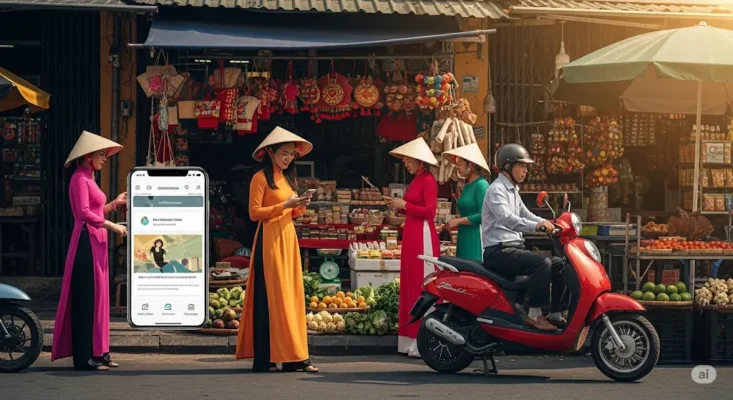
Despite rapid modernization and global influences, Vietnamese traditions continue to shape contemporary Vietnamese society. These traditions are not static relics of the past. They are dynamic, evolving forces that provide continuity and identity in a changing world. From the food people eat to the way they communicate and structure their communities, the echoes of ancient customs resonate strongly.
The resilience of these core values, such as family loyalty, respect for elders, and community spirit, demonstrates their enduring importance. Understanding this interplay between tradition and modernity is key to understanding Vietnam today. Vietnamese folk tales and their morals continue to subtly guide behavior.
Traditions in Everyday Life: From Cuisine to Communication
The influence of tradition is evident in many aspects of daily Vietnamese life. Vietnamese cuisine, with its emphasis on fresh ingredients, balance of flavors (sweet, sour, salty, bitter, spicy), and communal dining, is a direct reflection of traditional agricultural practices and social values. Rice is the staple, forming the heart of most meals, a legacy of centuries of rice cultivation. Traditional music, featuring instruments like the Dan Bau (monochord zither), still finds an audience and is often performed at cultural events.
Communication styles also reflect traditional values. Indirectness and politeness are common. People may avoid direct confrontation or saying “no” outright to maintain harmony. Understanding these nuances is important for effective interaction. The importance of village life, even as urbanization increases, means that community ties often remain strong. Traditional medicine, based on principles of balance and natural remedies, coexists with modern healthcare and is still trusted by many. The integration of folk beliefs often complements formal religious practices.
The Evolution of Traditions: Adapting to Change
Vietnamese traditions are not frozen in time. They have shown remarkable adaptability in the face of modernity, innovation, and foreign customs. Young Vietnamese people, while globally connected, often maintain a strong connection to their cultural roots. For instance, the Ao Dai is still cherished, but contemporary designs may incorporate new materials or styles. Tet holiday remains a central family event, though some younger families might choose to travel during the holiday, a novelty that was less common previously.
The challenge lies in balancing the preservation of cultural heritage with the embrace of contemporary practices. There is an ongoing dialogue about how to maintain unique Vietnamese identity while participating in a globalized world. This evolution ensures that traditions remain relevant and meaningful to new generations. Traditions evolve, but their core essence often endures, showcasing the resilience of Vietnamese culture. The Lunar calendar influence remains strong for festivals, but daily life operates on the Gregorian calendar.
Preserving Vietnamese Heritage for Future Generations
Efforts to preserve Vietnamese heritage are ongoing at various levels. The government plays a role in recognizing and protecting cultural sites like Hoi An Ancient Town and Hue Imperial City, and intangible heritage like Ca Tru singing or Dong Ho paintings (Van Mieu is a historical site often visited). Educational institutions teach Vietnamese history and culture. Communities themselves are often the strongest guardians of local traditions, passing them down through festivals, storytelling, and daily practices.
For Vietnamese people, these traditions preserve identity and provide a sense of belonging. For visitors and Vietnamese tourists exploring their own country, understanding these traditions offers a richer, more meaningful experience. It allows for deeper connections and a greater appreciation of the country’s unique cultural tapestry.
Vietnamese folklore and Vietnamese beliefs are kept alive through these efforts. EssentialVietNamtravel.com believes that promoting awareness and respect for these customs contributes to their preservation. Understanding traditions requires context, and this guide aims to provide that. This includes understanding the social aspects, artistic aspects, and even culinary aspects.
Further Reading: Explore More About Vietnam
- Discover the Elegance of Vietnamese Traditional Dress, the Ao Dai (
https://essentialvietnamtravel.com/vietnamese-traditional-dress-introduction-vietnams-clothing/) - Your Ultimate Guide to Vietnamese Holidays and Rich Traditions (
https://essentialvietnamtravel.com/ultimate-vietnamese-holidays-guide-rich-traditions/) - A Comprehensive Vietnam History Guide for Travellers (
https://essentialvietnamtravel.com/vietnam-history-guide) - Understanding Vietnam Attire: What to Wear for Every Occasion (
https://essentialvietnamtravel.com/vietnam-attire/)
Conclusion: Embracing the Richness of Vietnamese Traditions
The tapestry of Vietnamese traditions is rich, diverse, and deeply meaningful. From the profound respect for family and ancestors to the vibrant celebrations of festivals like Tet, these customs provide a unique window into the soul of Vietnam. Icons like the Ao Dai, the lotus flower, and the conical hat are more than just symbols; they are expressions of a distinct cultural identity honed over centuries. Navigating Vietnamese culture with an understanding of its etiquette and social norms, such as proper greetings or being mindful of things not to do when in vietnam, allows for more authentic and respectful interactions.
As EssentialVietNamtravel.com has highlighted, these Vietnamese customs are not merely historical artifacts but living practices that continue to evolve and shape modern Vietnamese life. They influence everything from daily routines and Vietnamese cuisine to social interactions and artistic expressions. For any vietnam traveller or cultural enthusiast, taking the time to learn about and appreciate these traditions will undoubtedly enrich your journey.
Whether you are exploring the ancient streets of Hanoi, cruising the Mekong Delta, or simply sharing a meal with a local family, the spirit of Vietnamese tradition is an integral part of the experience. Embrace it, respect it, and you will discover the true heart of this captivating Southeast Asian culture. Understanding the culture and customs of vietnam opens doors to genuine connection. The tradition influences behavior in many subtle and overt ways.

